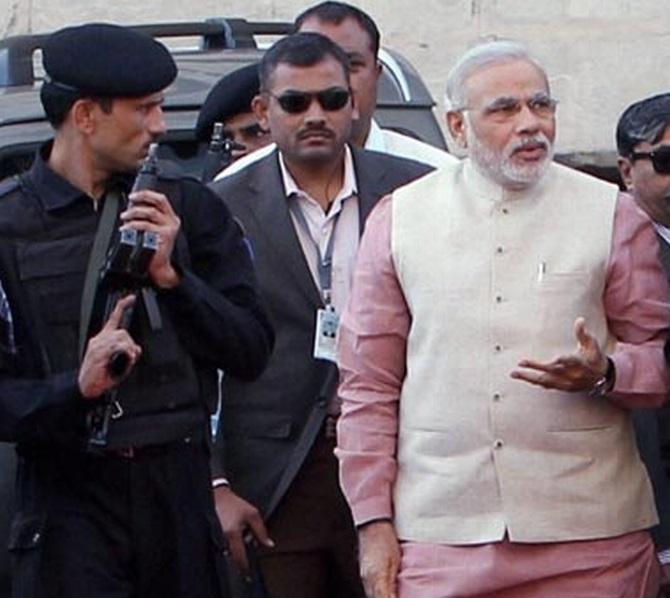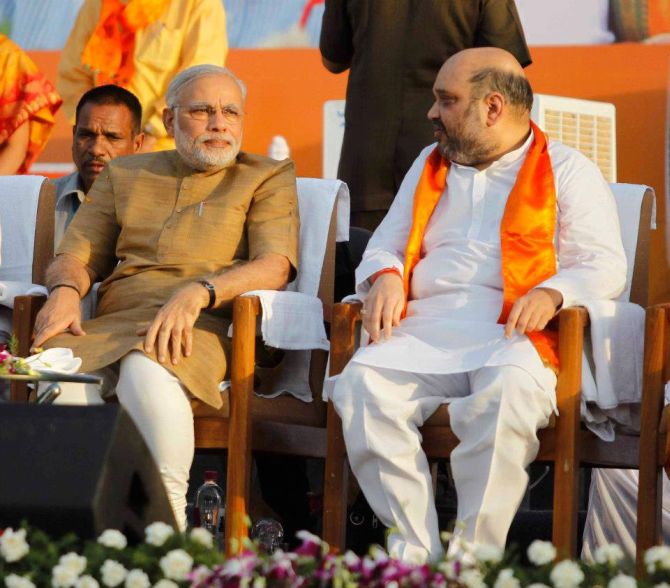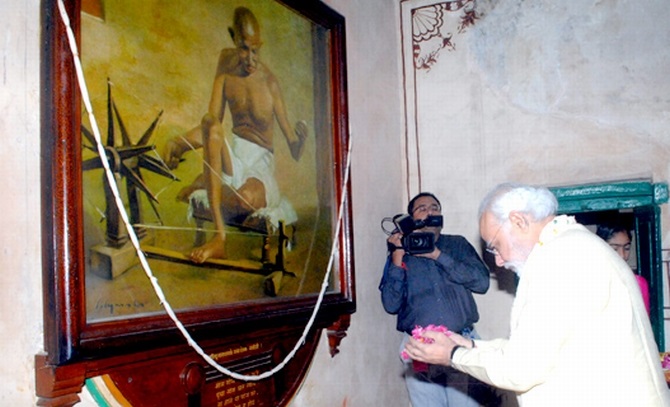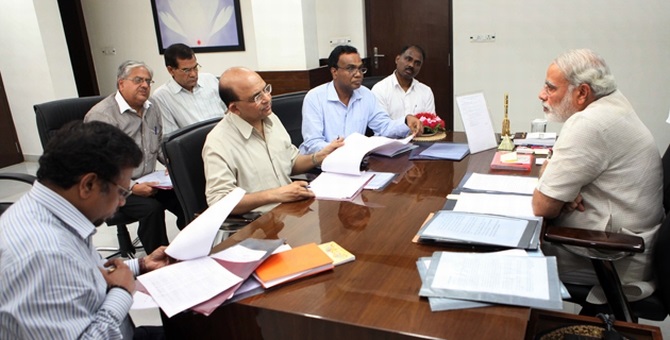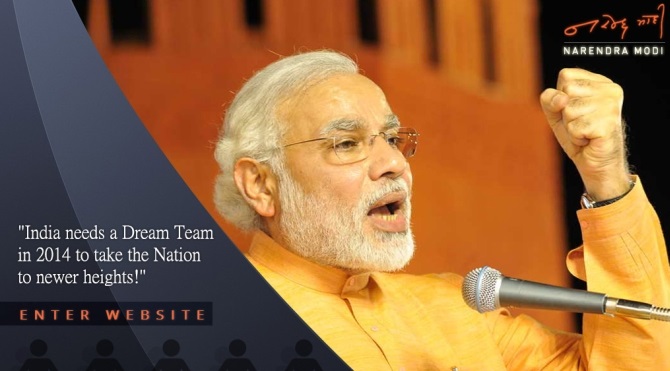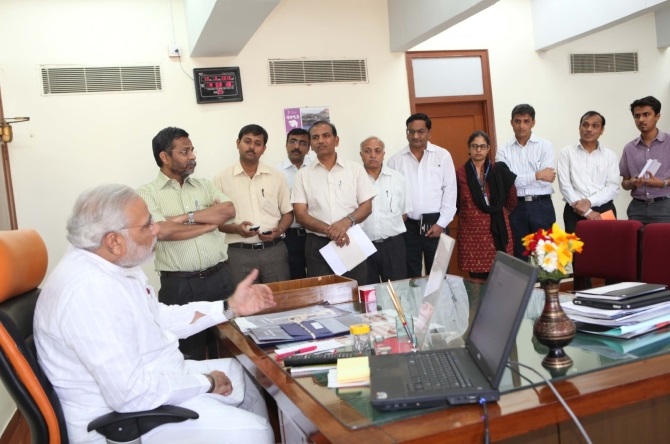 | « Back to article | Print this article |
PHOTOS: Meet the pit crew behind Modi's success
Bharatiya Janata Party’s PM-in-waiting works for 18 to 20 hours and managing him is a team of top bureaucrats and officers on special duty. Here’s a look at Team Modi.
It has been just over a month and a half since Gujarat chief minister Narendra Modi was declared the Bharatiya Janata Party’s official prime ministerial candidate for the 2014 Lok Sabha polls.
In these 45 days, he’s addressed about half a dozen mass rallies and two dozen other events, all over the country. These range from Rewari to Trichy and Patna; he’s addressed Delhi and in the states going to the polls in November-December. Lambasting the Congress-led United Progressive Alliance government on issues from corruption to foreign policy, accusing them of lack of vision and will, among others.
Click NEXT to read further…
Meet the pit crew behind Modi's success
He’s also done so in politically sensitive Uttar Pradesh (Kanpur and Jhansi), where his point man, Amit Shah, is stationed as state in charge.
He’s also taken on Bihar counterpart Nitish Kumar, who’d severed 17-year ties with the BJP over the issue of Modi’s elevation.
Click NEXT to read further…
Meet the pit crew behind Modi's success
Apart from taking on political rivals ahead of next year’s Lok Sabha elections, the attempt is to reach out to different segments. It was only during the nine days of Navratri that Modi did not leave Gandhinagar.
And, in between all these rallies and events, he’s taken cabinet meetings and also attended the three-day legislative assembly session from September 30 to October 3. He also made a trip to Porbandar on Mahatma Gandhi's birth anniversary.
Click NEXT to read further…
Meet the pit crew behind Modi's success
How’s he managing all this in limited time? There’s a group of around two dozen men, top bureaucrats and officers on special duty, who do the planning. Chief principal secretary K Kailashnathan, a retired IAS officer, and secretaries G C Murmu and A K Sharma are the backstage managers.
The OSDs comprise experts in different sectors, such as Hiren Joshi for information technology and Gautam Patel for research. For handling public relations and the media, there are Jagdish Thakkar and Hitesh Pandya.
Click NEXT to read further…
Meet the pit crew behind Modi's success
He also has a research team providing inputs for the speeches at various fora. It also keeps track of national and international issues on which Modi needs to comment. They follow the news trends of the day and then advise the CM.
This team is also involved in compiling articles on issues such as irrigation, solar power, industrial production and agriculture that are then posted on pro-Modi websites and, sometimes, on the chief minister's official blog or website.
Click NEXT to read further...
Meet the pit crew behind Modi's success
Modi is known as a workaholic on matters both political and administrative. During the 2009 Lok Sabha poll, he’d aggressively campaigned across Gujarat, with a daily average of three public meetings, coupled with extensive travel across the state. In 2011-12, he’d observed as many as 32 one-day fasts in different parts of the state, sitting on a stage and meeting people; in quite a few places, many would joij him in the fast.
Says party spokesperson Harshad Patel, "Modiji has been working 18-20 hours on an average every day, ever since he was declared the party's PM candidate." He added this had been Modi's style of working for years; however, this year he seems more aggressive.
Click NEXT to read further...
Meet the pit crew behind Modi's success
He says if any BJP unit wants Modi to address a rally in their state, they approach the CM with dates. "If those do not suit Modi, these are altered. Or, in consultation with Rajnath Singhji (BJP national head), a date is fixed, based on the necessity of Modi's presence.” The cost of transport, air or road, is borne by the respective state unit.
Who decides which rally or event Modi is to address? Patel’s prompt answer: "Badhu sabeh nakki kare che (Everything is decided by the boss)."
Click NEXT for more photo features...
TOP photo features you missed last week
Click on MORE to see another PHOTO features...
